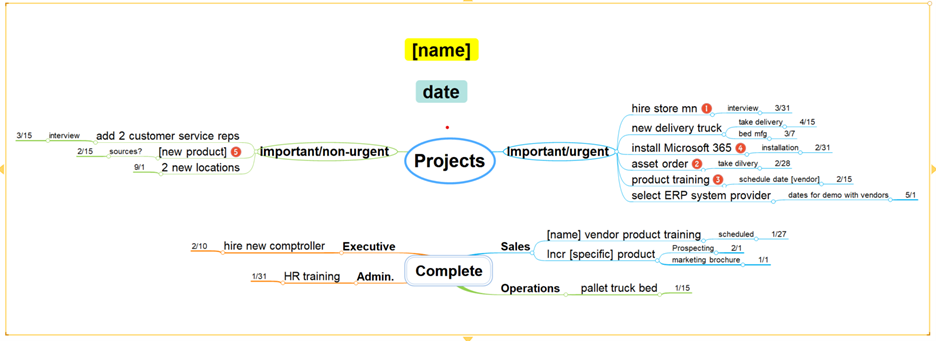The Problem
As a consultant to small- and medium-sized distributors, I often focus on project management. I generally begin an assignment with the question, “How are you progressing with your top projects?” Most respond that they have difficulty meeting deadlines and completing projects in a timely manner. This leads to high levels of stress and a loss of enthusiasm for the sale. “Too much to do, and not enough time to do it,” is a recurring theme.
Most of the business executives I work with do not keep a written record of active projects. While they may record one or two, another 10 to 15 projects are not laid out on paper. As a consequence, the team often bounces from one project to another at random. Tasks and schedules are not managed and this leads to inefficiencies.
The Solution
It’s time to take charge. Here are some suggestions on how to better manage your projects.

- Record all projects – In Stephen Covey’s 7 Habits of Highly Effective People (the-7-habits), he suggests you start with cultivating these habits: First Things First and Begin with the End in Mind. Create a mind map (illustration) to differentiate the projects between Important and Urgent and Important but Not Urgent. Then, list all projects currently under consideration.
- Prioritize projects – Prioritize your top 5 projects. Consideration should include time to completion and return on investment. Patrick Lencioni, author of The Advantage, (the-advantage), advises that corporate projects should receive special attention. However, all of your top 5 do not need to be large projects. Smaller short-term projects sometimes yield faster momentum and build morale.
- Review weekly – Establish a consistent review process. Each week date your mind map, review the order of the top 5, and list next steps for the ensuing week. Include your executive team in the review as it highlights the company’s direction. Engage the team in refining the review and solicit support by delegating responsibilities. Each participant should review their departmental mind maps.
- Record all completed projects – Your team will accomplish more with greater results if a year-to-date recording of completed projects is maintained.
Management = Growth
Lastly, these four steps improve communication and allow you to manage your projects more efficiently. Meeting weekly with my clients to review projects enables them to accelerate their company’s growth.
Get tips and tricks like the above in The Art of Sales books. Or subscribe to the FREE monthly articles here.

